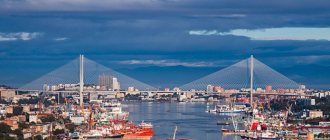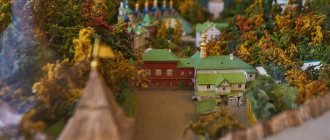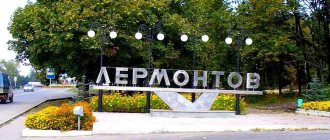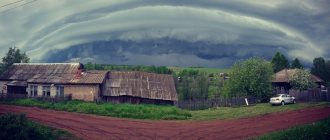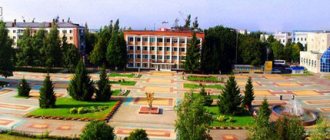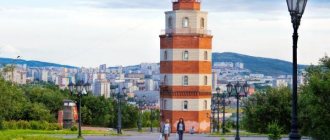The bulk of the population of modern Vladivostok are descendants of numerous peoples who inhabited the Primorsky Territory. In the nineteenth century, by decree of the Russian government calling for the development of the eastern coast, a settlement was formed.
The bulk of the local population are natives of the central regions of the country. Migrants from Asia and Europe, who came here to trade and build, become the determining majority of the ethnic composition, making up the bulk of the local population of the future Vladivostok.
Historical reference
The foundation of the military post, which became a Russian Pacific harbor, dates back to the middle of 1860. According to the decree on encouraging the settlement of the lands of the Amur and Primorsky regions, crowds of free peasants flock here, wanting to make a life. The abolition of serfdom strengthens local migration processes, creating an increase in settlers. 1878 - The harbor population is 4,000 citizens.
A serious factor that determined the development of the demographic situation of Vladivostok is its territorial location. The construction of the Trans-Siberian Railway, which opened a short route to the Pacific coast, the development of international trade routes, economic relations, military intervention by foreign powers - events that contributed to the growth of the population of the center.
Further industrialization of the country, the development of agriculture, education, and medicine significantly increase the level of well-being, contributing to an increase in the birth rate and a massive influx of immigrants. In the 20s The population of Soviet Vladivostok is 100,000 inhabitants, according to the census.
How did Vladivostok appear?
Without delving into ancient history, we note that before the signing of the Aigun Treaty in 1858, Primorye belonged to China. Russia owes the annexation of lands to Count Nikolai Muravyov-Amursky, the Governor-General of Eastern Siberia, who immediately began searching for a place to create a Far Eastern stronghold.
The convenient, well-sheltered harbor in Peter the Great Bay was ideally suited for these purposes, and since 1859, newspapers have been reporting on a new Russian bay called Vladivostok, made up of two words: “own” and “East.”
The first settler arrived here in 1861. This was the merchant Yakov Semenov, who became the head of the post in 1870, and a year later the Siberian military flotilla was transferred here.
According to the 1878 census, 4,163 people already lived in the territory of the main port. If you are wondering what region of Russia Vladivostok belonged to then, the answer is simple. In 1880, the bay received the status of a city, which became the administrative center of the Primorsky region.
Current data
In the last decade there has been a natural increase. 606,561 residents - the number of people living in the district permanently. The table presents data for urban areas.
| District name | Number of citizens |
| Pervomaisky | 155 943 |
| Leninist | 155 306 |
| Pervorechensky | 144 596 |
| Soviet | 92 057 |
| Frunzensky | 58 659 |
Statistics by year
- 1860 - the number of settlers reaches 200 townspeople; the bulk are members of the military crew sent to explore the eastern coast of Russia.
- 1889 - the population reaches 13,000. Moreover, for every four male townspeople there was 1 woman.
- 1900 - representatives of 70 nationalities live in the settlement.
- 1914-1917 During this period of revolutionary unrest, the value decreased - 106,700 citizens.
- 1917 - the number of citizens was 130,000. The end of the civil war and the restoration of the national economy contributed to natural growth.
- 40s - 215 thousand inhabitants.
- 1941-1945 - World War II claims the lives of 25 thousand Soviet natives of Vladivostok.
- 1974 - population reaches 500,400 citizens.
- 1991 - a record figure was registered - 679,000 citizens.
- 1992 - population decline caused by mass migration of local residents.
- 2010 - the figure is 604,800 citizens.
- January 1, 2021 - According to the census, the permanent resident population was 606,651 citizens.
Closing of Vladivostok for foreigners
The strategically important eastern stronghold of the USSR has always been under the close attention of the country's top leadership, and since January 1, 1952, the city has been closed to foreigners. Even if foreign tourists knew what region Vladivostok was located in, when they tried to enter they were turned back.
Remember the phrase from Vysotsky’s song: “The closed port of Vladivostok is open”? Vladimir Semenovich then had domestic flights in mind, and Boris Nikolayevich Yeltsin opened the city for foreigners only in 1991.
The consequences of the collapse of the USSR greatly undermined the city's economy. The defense industry lost customers, and seafood from the “fish capital” went to Japan, poaching, smuggling of timber and Japanese cars flourished. Residents of the city moved en masse to the central regions, and only at the beginning of the 21st century did Vladivostok begin to get back on its feet.
About the city
Vladivostok today is the cultural capital of the Far Eastern Federal District of Russia, a major commercial port of Primorye, and the Pacific base of the Russian military fleet. The city's territory covers 2 peninsulas and 50 small islands. The specificity of its island location gives this city a temperate climate. A cold, windy winter gives way to a rainy, foggy summer.
Over the 160-year history of development, the economy of the coastal center has experienced several ups and downs. 1952-1991 — the city is closed by government decree. Accordingly, access to foreign courts and Soviet citizens is prohibited. 2015 - the port was given the status of a “free zone”, which gives duty-free trade privileges. The bulk of Asian goods are delivered by sea trade transport.
High prices for essential goods, poor ecology, and harsh climate are the main “cons” that determine the assessment of the local population. The average score, according to the rating, is 3. The results of research from the Financial University showed negative dynamics: Vladivostok is losing ground every year. 2021 - the city ranks 68th in the federal city ranking.
"A city with infrastructure on the seashore"
The first million-plus city in the Far East will become a center of attraction for residents not only of the region itself, but also of Siberia, and in the future it may become attractive for Central Russia, says Alexander Tsyganov, head of the department of insurance and social economics of the Financial University under the Government of the Russian Federation.
“With a very attractive urban planning concept developed by VEB.RF, a coastal city with a full-fledged infrastructure and all the attributes of metropolitan life on the seashore may appear,” says Tsyganov in an interview with Izvestia. — If today many people choose Sochi for retirement, then Vladivostok after renovation will become like San Francisco and will definitely find new residents. The presence of a large number of consumers will allow the development of theaters, restaurants, medical institutions, delivery services, etc. It will become easier with places of recreation, parks and entertainment, and the economic efficiency of modern waste disposal will appear.
Far Eastern San Francisco
Photo: IZVESTIA/Pavel Volkov
In addition, according to the expert, the project of the Far Eastern University will be developed, which will become more in demand among both Russian and foreign students.
“The main goal of such a project is to create a comfortable urban environment,” says Izvestia’s interlocutor. — A large urban agglomeration itself will become a factor in economic development, especially since the territory has a preferential status and potential. The emergence of a new center of gravity and economic growth will help the Far East as a whole - a stable sales market will be formed, and improving the well-being of the population will become a factor in the economic development of the region.
“Nowhere else in the world is it possible to fly 8 hours for $100”
Head of the Ministry of Eastern Europe Alexey Chekunkov talks about reducing prices for tickets and food, rising prices for housing and new benefits for foreign companies
As Tsyganov notes, several Russian megacities have experience in annexing suburbs - “new Moscow”, greater Sochi and St. Petersburg; to confirm the status, neighborhoods in Voronezh and Volgograd were annexed; there is experience in the successful formation of large urban agglomerations all over the world, although there are and the costs of concentrating populations in large cities.
Ethnic composition
The national composition of Vladivostok is represented by many ethnic groups. The main indicator - 86% of the inhabitants - are Russians, Ukrainians - 2.5%, representatives of Korean nationality - 1%, Tatars - 0.5%. The remaining 10% are Chinese, Kazakhs, Uzbeks, Belarusians, Azerbaijanis, and Armenians. The Udege, Nanai, and Taz are part of the indigenous ethnic groups represented by a small national composition.
National traditions, culture, and language of the aborigines are gradually being forgotten. The main language of local residents is Russian; the second position is occupied by English - 6.5% of citizens; third place - Ukrainian language: 1.2%.
General's millions
The other day - apparently in view of the approaching census - the burning question about the number of Vladivostok residents was raised in the LJ community "Vladivostok" by the popular local blogger russlan-v (behind this nickname lies an equally popular figure in the media and music world in Vladivostok, Ruslan Vakulik). Here's what he writes: “Officially, the population of Vladivostok is 667,000 people. But, according to law enforcement agencies, this figure today ranges from 1,300,000 to one and a half million. The General of the Ministry of Internal Affairs told me about this in a conversation quite officially. 667,000 are people with registration. In reality, hundreds of thousands of people live here without it: the Chinese, students from Far Eastern cities, military personnel, sailors and fishermen from all over the country, other unregistered figures from Ussuriysk, Nakhodka, Komsomolsk, Khabarovsk, Novosibirsk, etc. And also Fergana. That is, twice the official figure. And the population is growing steadily. They leave, yes, but many times more people come... One and a half million is an alarming figure for a city with such narrow roads.” And he adds a little later: “The same person said that REALLY more than two <million> live here, MOST LIKELY.”
If we accept this general-blogger version, the conclusions may be ambivalent. On the one hand, it turns out that the groans of “we’re leaving, we’re leaving, we’re leaving” are incorrect: it turns out that there is no demographic catastrophe, visitors are flocking to us, and this can only mean that the city is becoming more attractive and comfortable, and the quality of life in it is improving. ever higher. This point of view is beneficial for local authorities: it means they are performing well; and if the average person doesn’t see any improvement, well, that’s why he’s an average person, not to see beyond his own nose. On the other hand, these same conclusions are disappointing in the sense that the authorities, it turns out, are not in control of the situation. The population is growing, while the passport regime is clearly being violated, but the police are doing nothing about illegal visitors from China and Central Asia; administrations continue, for example, to calculate the load on roads based on greatly underestimated figures, etc. On the third hand, these conclusions can be manipulated more cunningly. For example, the mayor’s office, having recognized that more than a million people have lived in Vladivostok for a long time, can explain the density of our traffic jams, the quality of our roads, and the queues at institutions with this fact (and not its incompetence). Again, this provides grounds for increasing the staff of the mayor's office.
Gender and age
Beginning of 2021 - the population of the hero city occupies 26th position in the list of 1115 urban settlements in Russia. The female population is significantly larger than the male population. The census results published by Rosstat show that the percentages by gender are 52.5% and 47.5% respectively. Age structure of the port. Relevance - 01/01/2020.
| Age | Number, people | Women, persons | Men, persons |
| Younger than able-bodied | 97 472 | 47 341 | 50 131 |
| able-bodied | 389 434 | 184 292 | 205 142 |
| Older than able-bodied | 146 238 | 103 061 | 43 177 |
Section 3. Climate Features
From a scientific point of view, Vladivostok is considered to have a monsoon climate. In practice this means the following:
- winter in the city and region is cool and dry, and the weather in the cold season is clear;
- spring is quite long, the temperature often changes;
- summers are humid and warm, this season accounts for the maximum amount of precipitation;
- autumn is warm, precipitation decreases towards winter, the first frosts generally appear in early November.
The warmest month in Vladivostok is August, temperature +20...+21 degrees Celsius. The coldest is January, temperature -11.3…– 11.5 degrees. The water temperature in August is +23 degrees, but only the most desperate and courageous dare to swim.
The average annual precipitation is 818 millimeters.
Marriages and divorces
Analyzing the annual indicators of marriages and divorces, experts have identified disappointing statistics. According to census data, Primorsky Krai became the absolute leader in the number of divorces in 2021. 9,298 married couples who registered their marriage decided to get a divorce, which represents 59% of the total number of registered marriages - 15,695.
According to statistics for 2021: for every 10 marriages concluded in Vladivostok registry offices, there are 7.4 divorces. The number of registered marriages is 4,574, 2,967 applications for divorce. 6 out of 10 married couples choose divorce.
Latitude Crimean, longitude Kolyma
Primorsky Krai is somewhat isolated in terms of flora and fauna; there are quite a lot of endemics here.
This “lost world” was created because of the Sikhote-Alin, a barrier ridge that blocked the path of the glacier. Therefore, there was no last sharp climatic jump, and not everything had time to die out. Nowadays nature is a mixture of the southern and northern set of plants and animals. Add to this a heat accumulator in the form of an ocean, the virtual absence of large rivers, a cold current nearby and you get Vladivostok. Winter here is not harsh, crispy snow is rather a rarity, but this is not the -40 that is in windless Siberia, but the -15 that feels like an icy hell due to the wind. Well, if anything, the freezing rains have not been canceled either. The latter blocked the road to Russky Island while the ice was being knocked off the bridge cables. The military quickly organized supplies of food to stores and a crossing for doctors, but this is not at all the same as the bridge or the old ferries that came before it. And so usually only glazed cars. Despite the number of cars in the city (540 cars per 1000 inhabitants as of 2021), there is no smell of gasoline, because a strong wind simply blows it all out to sea. In exchange, however, the city gets typhoons and tsunamis.
This is on Cape Tobizin in Russian
So come see the fogs. The city is famous for them, and is often completely covered. Although there are quite a lot of sunny days, the main two words in describing the situation are fog and wind. It looks incredibly beautiful if you come for a couple of weeks or are showing a Japanese the most beautiful city on Earth from its aesthetic point of view, but the locals get a little tired of the humidity and wind. Especially in winter.
Now let's rewind a little back to the time of development of the region. Historically, they searched for ginseng here and then collected it. That is, how: they found a sprout, made a geotag in their head and returned to it after 3-5 years, hoping that someone else didn’t take it. There was a lot of hunting and fishing. As a matter of fact, the Chinese name of the city is “Trepang Bay” (the American name is Port May). Nowadays sea cucumbers can be found not only in museums, but also on farms.
Trepang is a sea cucumber, or, as the Chinese call it in slang, sea horseradish (where horseradish is by no means a plant, since the cucumber likes to grow vertically at certain points in its life). Perhaps this is one of the reasons why the name of the city was not directly translated from Chinese.
Sea cucumber farm, here it is still small and grows in cassettes
In Russky bays they also grow mussels and scallops.
The mollusk, by the way, has excellent eye mechanics: they are still single-pixel, but distributed. These are essentially photodiodes. When a predator swims above it, the eyes in the cluster quickly become obscured one by one, but not all at once. In response, the scallop closes the doors as quickly as possible and sits afraid.
The Kamchatka crab lives nearby in the Sea of Japan. He is brought out to greet the guest before cooking. When ordering steak with veal, they don’t do this.
The Amur tiger also lives in the region, of which everyone is very proud. Especially Cupid, who became famous for his friendship with a goat. Here, again, we need to dispel a couple of myths. The fact is that a goat for a tiger is an enrichment of the environment, that is, sports and gaming equipment first and food second.
If the goat had not become impudent, he would have lived and lived. Even I wouldn’t have thought of waking up the tiger, but he pomp-pomped with his hoof - get up and get up! Alexey Anosov, safari park veterinarian
A bunch of broken animals from the region and neighboring areas can be seen in this very safari park. There are program animals for conservation (the same tigers) and there is a shelter for those who were rescued in one form or another. Alexey picked up a vulture in a cafe, found a harza with a rotting paw in the wild, and so on.
In nature, it is impossible to find absolutely healthy animals in principle... these are absolutely diverse parasites, infectious diseases, including those transmitted to humans. We receive a lot of injured animals, that is, they are either some kind of injury as a result of life activity, or they are caused by road accidents. I'm talking about nature in general. We usually receive animals, those that are brought by people, they have all either been damaged at some point, or these are still fresh injuries. We mainly suffer from injuries. Or an extreme degree, the terminal stage of some infectious disease or the same parasitic infections that have already brought them to an extreme degree of exhaustion. An animal cannot even escape from a person. Alexei
The second damn important object is the aquarium. It is interesting not only because of the dolphin show, but because it contains a lot of animals on display and outside the exhibition, and scientific work is carried out with them. Actually, he exposes an API that allows you to conduct some kind of experiment on an animal and get the results remotely. That is, someone somewhere on the planet comes up with a task, they perform it in the aquarium and send the result.
Some of the most interesting experiments include studying the intelligence of seal seals (they solve logical problems and sort arrays), isolating multipotent stem cells from the skin of fish, there are a bunch of programs for breeding different fish in captivity (and the results are excellent), plus what especially surprised me (but This is already a familiar story for the aquarium) - penguins are vigorously breeding there.
Natural movement
The difference in the main indicators of fertility and mortality of the population is natural increase. A negative value of the indicator means natural decline. According to the 2019 census of local residents, it was established that natural movement is negative. The mortality rate - 7073 - exceeded the birth rate - 5703. The decline is - 1370.
The main reason for the natural decline is the desire of the younger generation to move to developed regions of the Federation, find work, settle down, start a family and children. Pensioners and people of the older generation are afraid to move, leave their household, their homes, hoping to find better conditions. Preferring to die in their beloved city, people of advanced years have already come to terms with the terrible environmental situation of the coast, high prices, low level of social development, and provision for the city of Vladivostok.
Strategic advantages
As Vladimir Annikov, adviser to the group’s president for digital markets and head of the company’s corporate block, explains in a conversation with Izvestia, the presence of a million-plus city will be a favorable factor for the development of the Far Eastern region for a number of strategic reasons.
First of all, we are talking about an approach that originates from the Soviet past, when additional financing was provided to millionaires. “It’s worth noting that there is no special regulation aimed at providing preferences on this basis—it’s more of a tradition,” says Annikov.
Far Eastern San Francisco
Photo: IZVESTIA/Pavel Volkov
The second factor is the status of a million-plus population as a kind of regional and migration brand: the economically active population is more likely to choose this particular city to live and work when considering the issue of internal migration. Don’t forget about the general positioning: according to Izvestia’s interlocutor, a million-plus city will more often be included in regional business scaling programs.
“The National Cruise Line will be a major breakthrough.”
Minister for Development of the Far East and Arctic Alexey Chekunkov - about the prospects for tourism in the region and new icebreakers in the Arctic
In addition, according to the expert, it is possible that if Vladivostok becomes a million-plus city, it will be able to apply for the status of a city of federal significance, but “that’s a completely different conversation.”
Migration
According to the latest census, the settlers "organized" a significant increase in the general population of the Pacific coast. 901 people - the number of migrants who arrived - data registered by the Vladivostok Federal Migration Service in the first quarter of 2019. Census data was published on the official website of the Vladivostok City Hall.
Census 2021: the numbers of migrant arrivals amounted to 26,529, and departures - 23,638, respectively. The migration increase on the Far Eastern coast reached 2891. A significant proportion of citizens who left the coastal harbor were migrants to the middle zone. The majority of people who moved here are representatives of international migration - neighboring countries, countries of the former CIS.
Port, naval base and more
Throughout its existence, Vladivostok has been and remains the most important strategic facility with increased defense capability due to the main base of the Russian Pacific Fleet.
Vladivostok is connected to the Sea of Japan by the Amur and Ussuri gulfs. The most important Pacific sea routes for the country’s economy pass here, providing trade links with hundreds of countries around the world. The city is also the largest financial and cultural center of the Far East.
What else is remarkable about the city, which has grown from a small stronghold? This is interesting!
- Sollers automobile plant, manufacturer of Mazda and Toyota.
- Shipbuilding enterprises “Dal.
- Fish processing plants, for example, Dalryba and Dalmoreproduct.
- Far Eastern Federal University, many other universities and their branches.
- Primorsky Oceanarium.
- Primorsky State Art Gallery.
- 5 professional theatres, 21 cinemas, a circus.
If you are traveling to Vladivostok, which region or region you are going to visit, it won’t hurt to know, at least for correctly filling out business documents and so as not to offend Vladivostok residents with your ignorance. State competently: “Vladivostok is the administrative center of the Primorsky Territory!” And enjoy the cultural life of the city, which amazes with its diversity.
Festivals, forums and holidays are held here every year; residents of the city never get bored, and guests are recommended to visit local attractions.
Forecast
The long-term status of a closed port had a detrimental effect, slowing down the economic, cultural, and foreign policy development of the seaside port. Lack of jobs, financial instability of the port, a decline in the birth rate of the coast, an increase in crime, mass relocations - the consequences of forced isolation.
According to the forecast, the population of the Primorsky Territory may decrease by 200 thousand by 2036 - official figures from Primorskstat as of August 2019.
The majority of local residents surveyed who left the hero city of Vladivostok noted unreasonably inflated prices for food, real estate, poor air quality, and roads. State programs of financial support for young families, low-income groups of the population, and municipal projects for the settlement of the Far Eastern region do not attract local residents who have decided to leave here forever in search of a better life.
We can only hope that the majestic and handsome hero city of Vladivostok will be able to restore its status as a major international port and the cultural center of Primorye. And the Far Eastern coast will once again become attractive in the eyes of the younger generation.
Foreign influence
Vladivostok is close to Korea, Japan and China. You probably know about Japan and used cars from there. In general, the Japanese buy a car, drive it for about 70-90 thousand kilometers, and then sell this junk. Residents of Vladivostok buy these beautiful new cars and sell them further across the country.
In the city, a left-hand drive car is called “with an atypical steering wheel position.”
Vladivostok, in fact, was a city that was very much Soviet... There is a fishing fleet, a merchant fleet, factories that make everything from watches to ships. Not only Vladivostok, but also the cities closest to it, the agglomeration. All of this [the collapse of the USSR] had a very strong effect on the city, because practically not a single plant went up. Almost no plant continued to exist as it was. They sank very quickly. Vladivostok lived exclusively by the sea for a very long time. Moreover, since we didn’t build ships, we didn’t even repair them, in fact... At the same time, the whole city lived thanks to cars. Cars were brought, cars were sold, cars were repaired, cars were transported to other cities to order. A huge market, which now, of course, has nothing in common with its past appearance. Now these are just websites, these are online sales. Then this is a completely huge part of the city, which completely razed one of the Green Corner forts to the ground... Everyone in the city depended on the automobile business in one way or another. Olga Ermoshina
To simplify, the story is this.
At first, the cars went to sailors. It was possible to bring a car in the hold once a year. Naturally, it was bought there and then sold in Russia. When it became clear how profitable this was, some received a sailor’s passport just for the sake of such a voyage: according to the documents it was a crew member, in fact it was cargo. Then for some time they transported the cars separately from the engines for subsequent modification. When the issue with spare parts was closed, they began to cut cars and weld them in Vladivostok: from the point of view of customs, the cut was scrap metal, and from the point of view of the happy new owner, it was sometimes a death trap. The first transporters were so loaded with them that an accidental storm could drown the parking lot. In general, they are constantly coming up with some kind of schemes aimed at tripartite: to mislead the state, the Japanese (these are recent technologies) and, of course, the final buyer. To properly buy a car in Vladivostok, you need to be qualified as a car mechanic - because you will come across, if not an ichthyander, then at least a twister. Other contraband and consumer goods were traditionally carried along with the cars. Smuggling even now, no, no, can be found in the same market (more precisely, the origin of goods in a number of stores cannot be verified). And among consumer goods, the most familiar to you is anime. More precisely, the first culture shock was caused by those types of anime that now anger RKN-chan. But regular anime on cassettes also spread across the country from Vladivostok. Now, by the way, there are stable geek communities in the city, and geeky people are a fairly common occurrence. There are a lot of cosplayers and they are quite well organized.
China is connected to the city by a huge number of migrant workers. It was these people who brought to Vladivostok what the sailors spent their money on: gambling (which, after the debtor’s credit was exhausted, ended with a game “for meat,” that is, for a finger or a piece of the belly), other leisure houses - and a bunch of Chinese goods. Now in the center of the city there is the Millionka quarter with the entourage of the departed Chinese, and the point of concentration of the current ones is the market on Sportivnaya, which is becoming civilized every year, but shouts in the spirit of “Come over, you bastard, you’ve got crummy cowards!” can still be heard from all sides. It’s really cool there, especially considering the naming of Chinese cuisine establishments in the spirit of “Dobrynya and Anya,” because the Chinese take the names of the country where they come.
Traces of Korean culture can also be seen. Milkis and pyanse are a must-try in the city. You can also drink Doshirak coffee and eat some doshirak.
There are many foreigners in FEFU. There are only 20 thousand students, of which 3.5 thousand are foreign. That is, this is the majority of the population of Russky Island.
FEFU main building
The island itself, by the way, was a wild land, where there were almost no roads and cars with license plates until the construction of the epic bridge to the epic summit. Then a new university was built there, and it became an island of students, military personnel and only then local residents. Our training is in Russian, so many students from Asia first learn the language for a year, and only then take the main disciplines:
The most popular specialties among them are, first of all, medicine and physics. Students from India go to study nuclear physics, as well as the physics of nanomaterials. International, managerial, economic, and humanitarian programs and areas are very popular in China. Students from Central Asia and Europe, the USA and Great Britain come to us to study medicine. Alexander Krestov
Just in case, let me remind you, using the example of the PCR laboratory of the Far Eastern Federal University, that the meaning is this: having once trained a group of doctors to work with our protocols, on our equipment and with our test systems, we receive a powerful lobby for purchasing all this from us, accordingly. Therefore, foreign students are marketing domestic production, and not a business about training.
Cubesat students
And a lot of tourists come for all this. To the Japanese, a tour to Vladivostok is sold as “Europe in two hours,” because the city center is largely German in architecture. Koreans simply get to know the mysterious Russian soul, but only through crowd guides. I mean, one couple went, posted the route, restaurants visited and shops with specific goods purchased - and now everyone is doing something like this, because data for the official guide was also taken from their route. Especially for Korean girls, they made apartments for Booking and AirBnB in bears and pink tones, and for boys - in the style of victorious communism with old furniture and portraits of Ilyich. Now all this has already disappeared from the market due to the pandemic.
Why is the center German? Because the Germans and Americans opened their own trading companies. The first supermarket in Rus' was created by Kunst and Albers. They simply brought goods to the city, sold them from a specially built building opposite the office - and bought furs and other goods for export in the city to bring back. The first travel blogger, Eleanor Lord Prey, also worked for them, and she wrote an incredible number of absolutely beautiful letters about the city with all the details. The book was published in a small edition by a local publishing house, and it took off. I highly recommend it, the features of everyday life are interesting.
Well, a lot about interaction with foreigners can be found in Arsenyev, in particular in Dersu Uzala. This book can be read both as a fairy tale and as the diaries of an explorer of the region: it has a very dramatic plot and a very dense presentation.
Well, the largest number of foreign tourists remained. The Chinese move around the city in miniature groups of 50-60 people, buying tons of condensed milk and bird's milk (here it is made using agar-agar, and the factory does not have the right to this name, but it is precisely bird's milk). For them, there is a completely strange thing here - the sea cucumber museum. Actually, there is a small museum and a lot of trading floor with all sorts of cranberries such as healing bear claws and other things. This is such a symmetrical response to Chinese production tours, when the tour takes 30% of the time, and 70% in the store. By the way, if previously our population went to Suifenhe to buy clothes, eat and get their teeth treated, because it was cheap, now with the fall of the ruble the Chinese are coming to us. It started with jewelry stores that quickly made signs in Chinese. Then sweet shops joined. Then the original Chinese stores came to sell Asian goods, because this is the best place to buy something, right?
Separately, it must be said about Suifenhe that it was there that in December 2013, by decision of the State Council of the People's Republic of China, the ruble (together with the yuan) began to be officially used. And the second thing is a whole business for duty-free transportation of goods across the border: weekend tours were offered with 5 kilograms of luggage at the expense of “importers.” “Importers,” accordingly, gave you luggage to carry across the border: 30 pairs of jeans for personal use by relatives, a pack of bras, and so on. As a result, people even went to Sunka to get their hair cut because it was cheaper.

